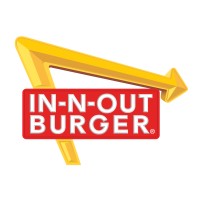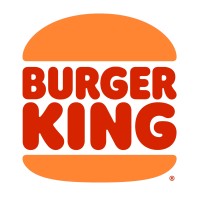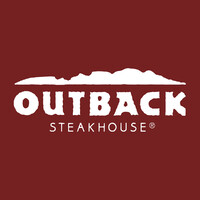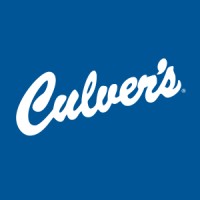
Panera Bread Company Cyber Security Posture
panerabread.comPanera began in 1987 as St. Louis Bread Company, a humble community bakery founded with a sourdough starter from San Francisco and a dream of putting a loaf of bread in every arm. While our business has expanded well beyond St. Louis since then, that same sourdough starter is still used in our iconic sourdough bread and the craft of baking bread fresh each day remains at the heart of Panera Bread. Each day, our trained bakers fill our bakery shelves with delicious freshly baked cookies, pastries, bagels, and a range of breads from focaccia to classic baguettes. We believe in serving delicious, freshly prepared, clean food made with carefully selected ingredients that we are proud to serve our own families. Our menu, crafted by chefs and bakers, features classic, comforting dishes, each with an intriguing twist. We respect our planet and take measures to lessen our impacts. We believe in treating people with warmth, kindness, and respect, whether it’s a guest in our cafe or one of our associates. And we believe in helping our local communities, especially in times of need. We’re also focused on improving quality and convenience. With investments in technology and operations, we offer omni-channel access to your Panera favorites – like mobile ordering, catering, and Rapid Pick-Up® for to-go orders, Curbside pick-up and delivery – all designed to make things easier for our guests. Today, Panera operates as both Panera Bread® or Saint Louis Bread Co St. Louis Bread Company in 48 states, the District of Columbia and Canada. Panera Bread is privately held by JAB Holding Company. Panera Bread is part of Panera Brands, one of the largest fast-casual restaurant platforms in the U.S., comprised of Panera Bread®, Caribou Coffee® and Einstein Bros.® Bagels.
Panera Bread Company Details
panera-bread
36288 employees
186267
722
Restaurants
panerabread.com
Scan still pending
PAN_3523675
In-progress
Between 900 and 1000
This score is AI-generated and less favored by cyber insurers, who prefer the TPRM score.
 Panera Bread Global Score
Panera Bread Global Score.png)

Panera Bread Company Scoring based on AI Models
| Model Name | Date | Description | Current Score Difference | Score |
|---|---|---|---|---|
| AVERAGE-Industry | 03-12-2025 | This score represents the average cybersecurity rating of companies already scanned within the same industry. It provides a benchmark to compare an individual company's security posture against its industry peers. | N/A | Between 900 and 1000 |
Panera Bread Company Cyber Security News & History
| Entity | Type | Severity | Impact | Seen | Url ID | Details | View |
|---|---|---|---|---|---|---|---|
| Panera Bread | Breach | 60 | 4 | 04/2018 | PAN2122261122 | Link | |
Rankiteo Explanation : Attack with significant impact with customers data leaksDescription: Panerabread.com, the Web site for the American chain of bakery-cafe fast casual restaurants suffered a data breach incident. the breach compromised information including names, email and physical addresses, birthdays and the last four digits of the customer’s credit card number. The data was left exposed for at least eight months before it was yanked offline. | |||||||
| Panera Bread | Data Leak | 85 | 4 | 04/2018 | PAN232315622 | Link | |
Rankiteo Explanation : Attack with significant impact with customers data leaksDescription: Panerabread.com leaked millions of customer records. It included names, email and physical addresses, birthdays and the last four digits of the customer’s credit card number. The data available in plain text from Panera’s site appeared to include records for any customer who has signed up for an account to order food online via panerabread.com. | |||||||
Panera Bread Company Subsidiaries

Panera began in 1987 as St. Louis Bread Company, a humble community bakery founded with a sourdough starter from San Francisco and a dream of putting a loaf of bread in every arm. While our business has expanded well beyond St. Louis since then, that same sourdough starter is still used in our iconic sourdough bread and the craft of baking bread fresh each day remains at the heart of Panera Bread. Each day, our trained bakers fill our bakery shelves with delicious freshly baked cookies, pastries, bagels, and a range of breads from focaccia to classic baguettes. We believe in serving delicious, freshly prepared, clean food made with carefully selected ingredients that we are proud to serve our own families. Our menu, crafted by chefs and bakers, features classic, comforting dishes, each with an intriguing twist. We respect our planet and take measures to lessen our impacts. We believe in treating people with warmth, kindness, and respect, whether it’s a guest in our cafe or one of our associates. And we believe in helping our local communities, especially in times of need. We’re also focused on improving quality and convenience. With investments in technology and operations, we offer omni-channel access to your Panera favorites – like mobile ordering, catering, and Rapid Pick-Up® for to-go orders, Curbside pick-up and delivery – all designed to make things easier for our guests. Today, Panera operates as both Panera Bread® or Saint Louis Bread Co St. Louis Bread Company in 48 states, the District of Columbia and Canada. Panera Bread is privately held by JAB Holding Company. Panera Bread is part of Panera Brands, one of the largest fast-casual restaurant platforms in the U.S., comprised of Panera Bread®, Caribou Coffee® and Einstein Bros.® Bagels.
Access Data Using Our API

Get company history
.png)
Panera Bread Cyber Security News
How restaurant operators can protect themselves from tech outages
Both Panera and McDonald's suffered major, systemwide IT system outages this month: Can these disruptive system failures be prevented?
Panera Bread Fuels Ransomware Suspicions With Silence
The restaurant chain hasn't provided any information regarding what led to a widespread IT outage, and customers and employees are asking ...
Panera Bread's digital outage reportedly blamed on ransomware attack
Panera Bread's mysterious digital channel outage in March was the result of a ransomware attack. That's according to cybersecurity site ...
Panera faces potential class-action lawsuit over data breach involving employee information
Panera LLC is facing a proposed class-action lawsuit from former and current employees due to a data breach that exposed employee information ...
Panera warns of employee data breach after March ransomware attack
U.S. food chain giant Panera Bread is notifying employees of a data breach after unknown threat actors stole their sensitive personal ...
Panerabread.com Leaks Millions of Customer Records
Panerabread.com, the Web site for the American chain of bakery-cafe fast casual restaurants by the same name, leaked millions of customer records.
Did Panera Bread Data Breach Expose Customer Data?
The Panera Bread data breach was disclosed in notification letters filed with the Office of California's Attorney General.
Panera Bread blew off breach report for 8 months, leaked millions of customer records
As many as 37 million customer records were exposed thanks to a security vulnerability that Panera Bread chose to ignore for eight months.
Panera Notifies Employees of Compromised Data
Panera Bread, the US fast-casual food chain, has begun notifying its employees of a data breach, after a "security incident" in March led to ...

Panera Bread Similar Companies

In-N-Out Burger
In-N-Out Burger was founded in 1948 by Harry and Esther Snyder in Baldwin Park, California, and remains privately owned and operated. Under the direction of the Snyder family, the company has opened restaurants throughout California, Nevada, Arizona, Utah, Texas, Oregon, Colorado, and Idaho. In-N-

Areas France
Areas is one of the world leaders in Food & Beverage and Travel Retail with revenues of 1.9 billion euros in 2018/19. Areas receives 348 million customers each year in its 1,900 stores in 12 countries in Europe, the US, Mexico and Chile. As a reference restaurant operator in the world of travel, fo

Burger King
The year is 1954. Dave and Jim*, two budding entrepreneurs, are on a mission to re-design the perfect broiler, one that will infuse flame-grilled goodness into every burger. And that's how our brand was born. Today the Burger King Corporation, its affiliates and its franchisees collectively operat

Outback Steakhouse
Made with an Australian flair, born under the Tampa sun. Outback Steakhouse is an Australian-inspired restaurant providing high quality delicious food with Aussie hospitality since 1988. Our success is based on our belief that if we take care of Our People, the institution of Outback will take care

Culver's Restaurants
With strong, Midwestern family values and genuine hometown hospitality, Culver’s® has proudly served its signature ButterBurgers® and Fresh Frozen Custard since we opened our first restaurant in 1984. There are now over 1,000 Culver’s restaurants in 26 states, with more than 50,000 team members offe

Life Cafe Lifetime Fitness
Life Cafe Lifetime Fitness is a Restaurants company located in 9602 Main St, Fairfax, Virginia, United States. Show more Show less

Frequently Asked Questions
Explore insights on cybersecurity incidents, risk posture, and Rankiteo's assessments.
Panera Bread CyberSecurity History Information
How many cyber incidents has Panera Bread faced?
Total Incidents: According to Rankiteo, Panera Bread has faced 2 incidents in the past.
What types of cybersecurity incidents have occurred at Panera Bread?
Incident Types: The types of cybersecurity incidents that have occurred incidents Data Leak and Breach.
Incident Details
Can you provide details on each incident?

Incident : Data Breach
Title: Panerabread.com Data Breach
Description: Panerabread.com, the Web site for the American chain of bakery-cafe fast casual restaurants suffered a data breach incident. The breach compromised information including names, email and physical addresses, birthdays and the last four digits of the customer’s credit card number. The data was left exposed for at least eight months before it was yanked offline.
Type: Data Breach

Incident : Data Leak
Title: Panera Bread Data Leak
Description: Panerabread.com leaked millions of customer records, including names, email and physical addresses, birthdays, and the last four digits of the customer’s credit card number. The data available in plain text from Panera’s site appeared to include records for any customer who has signed up for an account to order food online via panerabread.com.
Type: Data Leak
What are the most common types of attacks the company has faced?
Common Attack Types: The most common types of attacks the company has faced is Breach.
Impact of the Incidents
What was the impact of each incident?

Incident : Data Breach PAN2122261122
Data Compromised: names, email addresses, physical addresses, birthdays, last four digits of credit card numbers

Incident : Data Leak PAN232315622
Data Compromised: names, email and physical addresses, birthdays, last four digits of the customer’s credit card number
What types of data are most commonly compromised in incidents?
Commonly Compromised Data Types: The types of data most commonly compromised in incidents are names, email addresses, physical addresses, birthdays, last four digits of credit card numbers, names, email and physical addresses, birthdays and last four digits of the customer’s credit card number.
Which entities were affected by each incident?

Incident : Data Breach PAN2122261122
Entity Type: Company
Industry: Food and Beverage
Location: United States

Incident : Data Leak PAN232315622
Entity Type: Company
Industry: Food and Beverage
Customers Affected: Millions
Data Breach Information
What type of data was compromised in each breach?

Incident : Data Breach PAN2122261122
Type of Data Compromised: names, email addresses, physical addresses, birthdays, last four digits of credit card numbers
Personally Identifiable Information: names, email addresses, physical addresses, birthdays

Incident : Data Leak PAN232315622
Type of Data Compromised: names, email and physical addresses, birthdays, last four digits of the customer’s credit card number
Number of Records Exposed: Millions
Personally Identifiable Information: names, email and physical addresses, birthdays, last four digits of the customer’s credit card number
Additional Questions
Impact of the Incidents
What was the most significant data compromised in an incident?
Most Significant Data Compromised: The most significant data compromised in an incident were names, email addresses, physical addresses, birthdays, last four digits of credit card numbers, names, email and physical addresses, birthdays and last four digits of the customer’s credit card number.
Data Breach Information
What was the most sensitive data compromised in a breach?
Most Sensitive Data Compromised: The most sensitive data compromised in a breach were names, email addresses, physical addresses, birthdays, last four digits of credit card numbers, names, email and physical addresses, birthdays and last four digits of the customer’s credit card number.
What was the number of records exposed in the most significant breach?
Number of Records Exposed in Most Significant Breach: The number of records exposed in the most significant breach was 0.
What Do We Measure?
















Every week, Rankiteo analyzes billions of signals to give organizations a sharper, faster view of emerging risks. With deeper, more actionable intelligence at their fingertips, security teams can outpace threat actors, respond instantly to Zero-Day attacks, and dramatically shrink their risk exposure window.
These are some of the factors we use to calculate the overall score:
Identify exposed access points, detect misconfigured SSL certificates, and uncover vulnerabilities across the network infrastructure.
Gain visibility into the software components used within an organization to detect vulnerabilities, manage risk, and ensure supply chain security.
Monitor and manage all IT assets and their configurations to ensure accurate, real-time visibility across the company's technology environment.
Leverage real-time insights on active threats, malware campaigns, and emerging vulnerabilities to proactively defend against evolving cyberattacks.




